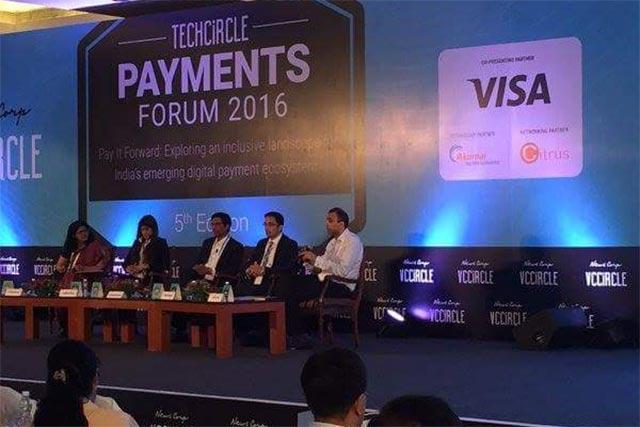The yet-to-launch payment banks need to monetise the data on customers at the bottom of the pyramid, said panelists at the Techcircle Payments Forum held in Mumbai. In a discussion on 'Emergence of New Payment Banks: How can traditional businesses respond?', senior executives from traditional banks, fin-tech companies and financial institutions agreed that payments banks will have to come up with innovative ways to generate revenue while solving the pain points of financial inclusion. The discussion was moderated by Amit Soni, principal, General Atlantic, the leading private equity firm.
The 11 entities, which received an in-principle nod from the Reserve Bank of India (RBI) last year to set up payments banks, are gearing up to roll out their services. These entities include the National Securities Depository Ltd, Department of Posts, telecom company Bharti Airtel Ltd and players in the payments space such as Paytm and Vodafone m-Pesa.
While selling investment products seems to be the easiest way of earning revenue, it remains to be seen whether these are appropriate for the customer base of a payment bank. This is because payment banks are aimed at the financial inclusion of the population at the bottom of the pyramid with no access to banking facilities.
"Even the idea of selling mutual funds to this set of customers is far-fetched. But once these customers come into the banking fold, there would be pressure on the system to get them and, therefore, this becomes an efficient distribution chain to be able to sell products to them," said Sohini Rajola, head of digital banking, Axis Bank.
A way out could be in assisting traditional financial institutions in reaching out to this section of the population with loan products. "If payment banks have customer data, they can partner with another lending institution to be able to help in the loan origination process," she added.
It will be difficult for payment banks in the first couple of years to make money and grow profitably, pointed out Mihir Gandhi, associate director of payments transformation, PwC, India. Cross-selling and partnering with banks will be limited as it depends on the partnership that these payment banks will have with the other banks. "All of these players are thinking of ways of keeping the money in the same ecosystem. If it moves out, then you don't get that opportunity and velocity to make fee based income for the services. That is the underlying premise on which most of these banks are trying to work," he added.
T R Ramachandran, group country manager for India and South Asia, Visa, however, alluded to the pot of gold at the end of the rainbow."Once you have information about the customers, it is gold in terms of how it can be monetized," he said. "No one's quite captured this gold yet which is why the RBI has given licences to a diverse set of players."
The reason why the regulator has decided to set up a separate entity for financial inclusion is because traditional banks have been unable to cope with the last-mile issues. Facilitating payments isn't the only challenge to get cusomters into the banking system in a cost-efficient manner, conducting identity and authentication tests is also a big hurdle, said Rajola. "The reason costs are so high, or it becomes slightly inefficient to deliver financial inclusion, is that for people at the bottom of the pyramid, institutions are yet to efficiently establish identity and authentication," she said. If that can be done at the lowest cost possible, then "we can build on top of that and provide a whole range of banking services" she said.
Ananya Birla, founder, chairperson and director of Svatantra Microfinance, said financial inclusion meant increasing the disposable income of the ones who are at the bottom of pyramid. "Because the income gap between the haves and the have-nots is so huge, consumer behaviour is very different. This can make it really tough for service providers to provide the best solutions for consumers," she said.
However, the development of microfinance institutions has led to the advent of new opportunities such as that of mobile wallets. While moving towards a cashless economy is the long-term proposition, mobile wallets are helping the country move in that direction, agreed panelists.
Like this report? Sign up for our daily newsletter to get our top reports.







